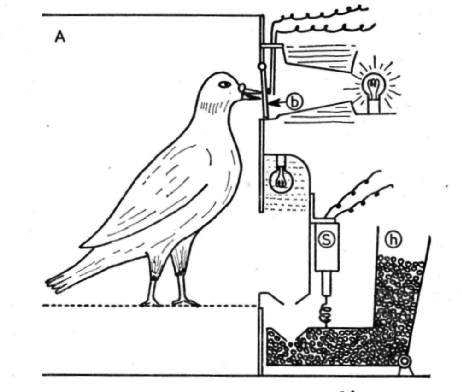When Is Behavior “Good Enough?”
 When is enough enough? This question has been asked by evolutionary theorists, teachers, employers, and all of the rest of us interested in how people and other living organisms survive and do things as they do. Consider the wings of a bird. Evolution guru Richard Dawkins has noted that from the standpoint of an aeronautical engineer, the design of a wing is less than aerodynamically perfect, but it works “good enough” to locomote the bird in the air from one place to another. If it didn’t the bird couldn’t fly!
When is enough enough? This question has been asked by evolutionary theorists, teachers, employers, and all of the rest of us interested in how people and other living organisms survive and do things as they do. Consider the wings of a bird. Evolution guru Richard Dawkins has noted that from the standpoint of an aeronautical engineer, the design of a wing is less than aerodynamically perfect, but it works “good enough” to locomote the bird in the air from one place to another. If it didn’t the bird couldn’t fly!

There are thousands of examples in our own experience where this good-enough criterion has applied to our behavior. I can’t paint a room with near the skill nor finesse of the professional painter our neighbors hired recently to repaint their house. Yet the rather yeoman-like job I did in repainting my study was sufficient. The walls looked good enough that I am pleased to work in it and I get the occasional compliment from friends and relatives on the room’s appearance (I will overlook the possibility that they are just being nice and secretly guffawing when they leave).

Several things enter into determining the good-enough criterion. Different activities obviously involve different criteria in terms of both precision and effort. Situations where doing things one way versus another involve the difference between life and death obviously involve more stringent criteria for behavior than do everyday tasks like taking out the garbage or raking leaves from the yard. Both physiological and behavioral histories often enter into determining the good-enough criterion. The good-enough criteria for an Olympic marathoner are certainly different from those I impose on my own running regimen. I typically expect and demand less of a college sophomore working in my lab than I do of an advanced graduate student.
All of these examples point to the fact that in almost every setting and circumstance there are minimally workable criteria for behavior. Less than that and the job isn’t done. More than that is always possible, and the improvements in behavior over the minimum require that benefits exceed the extra effort needed for the added gain.
 Applying a good-enough criterion to behavior involves what is called contingency management. Contingency management is in effect the process of specifying the minimally acceptable behavior necessary for reinforcement. Consider something as simple as requiring that a hungry pigeon peck a key 25 times to obtain a bit of food. It doesn’t take a pigeon long to knock off 25 responses. Let’s say it takes an average of about 10 seconds to do so. Can the pigeon go faster? You bet. If we change the good-enough criterion such that 25 responses have to occur in 6 seconds, the pigeons average completion time for the 25 responses will decrease to meet that criterion. In general, as we move the criterion around the pigeon’s completion time tracks the criterion. There are obvious physical limits to this, but within those limits behavior conforms to the good-enough criterion.
Applying a good-enough criterion to behavior involves what is called contingency management. Contingency management is in effect the process of specifying the minimally acceptable behavior necessary for reinforcement. Consider something as simple as requiring that a hungry pigeon peck a key 25 times to obtain a bit of food. It doesn’t take a pigeon long to knock off 25 responses. Let’s say it takes an average of about 10 seconds to do so. Can the pigeon go faster? You bet. If we change the good-enough criterion such that 25 responses have to occur in 6 seconds, the pigeons average completion time for the 25 responses will decrease to meet that criterion. In general, as we move the criterion around the pigeon’s completion time tracks the criterion. There are obvious physical limits to this, but within those limits behavior conforms to the good-enough criterion.
Good-enough criteria can be designed, as in the above example of the pigeon. But good-enough criteria are everywhere. There are minimal levels of word pronunciation or producing written letters that are necessary to be understood, but beyond those minimums a great deal of variation is allowable. Employers establish minimum performance goals for keeping one’s job, but in almost every workplace there are additional incentive, both planned and unplanned, for going beyond the good-enough criterion. Sometimes demanding going beyond ‘good enough’ does not add meaningful differences to outcomes. In managing ourselves and others, understanding when good is enough is important for the ease and pleasure we share in working and living with each other.



